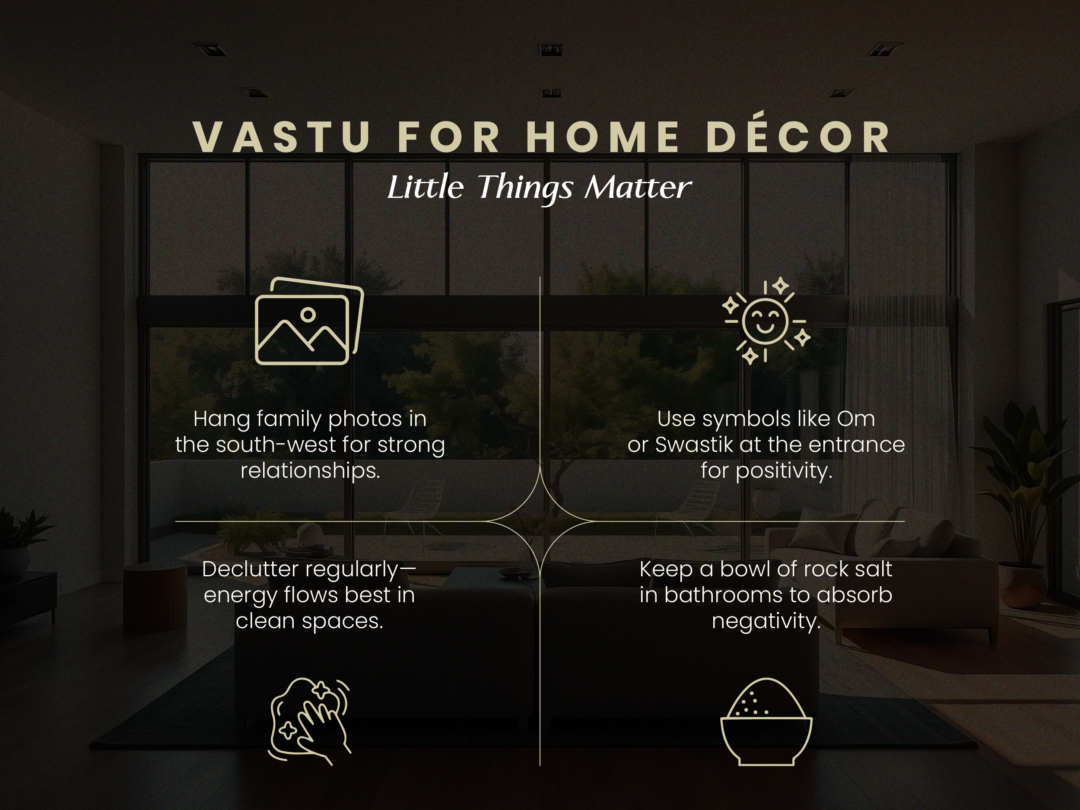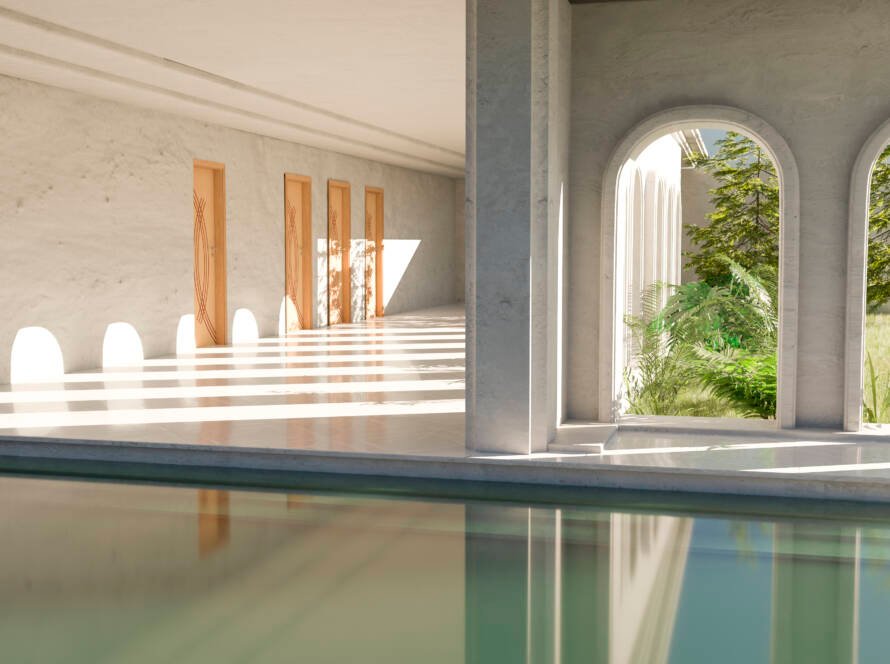Table of Content:
- From Entry to Bedroom: 10 Vastu Tips to Align Every Corner of Your House …
- The Sacred Space: Puja Room Placement
- Kitchen Vibes: Fire Element in the Right Zone
- Bedroom Basics: Sleep with Serenity
- Bathroom and Toilet Placement
- Staircase Strategy: Direction & Shape
- Windows, Ventilation, and Natural Light
- Centre of the Home: Keep It Light and Open
- Plants and Water Elements: Natural Balancers
- Bonus: Vastu for Home Décor – Little Things Matter
- Ankura Homes: Your Partner in Vastu-Aligned Living
- Final Thoughts
- FAQs
Have you ever stepped into a home that just felt… right? Like every corner radiated peace, and the energy felt inviting from the moment you walked in. That’s not just good design, it’s likely the magic of Vastu for a house at work.
In India, Vastu Shastra for home has guided architectural decisions for centuries. Rooted in ancient wisdom, Vastu for house principles focus on aligning your living space with the natural elements and energy fields.
Curious to learn more? Follow along!
From Entry to Bedroom: 10 Vastu Tips to Align Every Corner of Your House
Whether you’re building from scratch, buying a new property, or renovating an old one, here are 10 must-know Vastu tips that will help you create a balanced, peaceful, and prosperous space.
1. Main Entrance Matters the Most
The main door is the gateway for energy. According to Vastu for the house, it should ideally face the north or east direction. These directions attract positive vibes, abundance, and well-being.
For best results. avoid:
- Entrances facing south-west (considered inauspicious)
- Clutter or trash near the entrance
- Broken nameplates or chipped thresholds
Instead, go for a well-lit, clean, and welcoming doorway, preferably with a wooden main door and a nameplate that feels personal and intentional.
2. Living Room: Keep the Flow Open
This is where energy gathers, and your guests get their first impression. The living room should be in the east, north, or northeast part of the home. Furniture should follow a logical layout, ideally in the southwest section, with lighter pieces in the northeast.
So, always keep mirrors, clocks, and TV units on the north or east wall to maintain an energetic balance. Avoid placing mirrors opposite the main door. Keeping mirrors away from the main door ensures that the positive energy entering your home stays and circulates, enhancing the overall sense of peace.
3. The Sacred Space: Puja Room Placement
If you’re setting up a puja room, place it in the northeast direction, the most spiritually charged corner of the house, often called Ishanya.
Avoid placing:
- Bathrooms above or adjacent to the puja room
- In bedrooms or near the kitchen
Decorate it with soft lights, natural incense, and sacred symbols to keep the energy high and pure.
4. Kitchen Vibes: Fire Element in the Right Zone
The kitchen should ideally be in the southeast corner, the zone of the fire element. If that’s not possible, the northwest is an acceptable alternative.
Vastu for house suggests:
- Cooking facing east
- Avoiding kitchen placement under or next to toilets
- Using warm tones like orange, red, or yellow
Bonus Vastu tip: Never keep the stove and sink next to each other as they represent fire and water, which clash energetically.
5. Bedroom Basics: Sleep with Serenity
Your master bedroom should ideally be located in the southwest direction, as it provides stability and control. For newlyweds, the northwest is favourable.
Key Vastu tips for bedrooms:
- Sleep with your head to the south or east
- Avoid mirrors opposite the bed
- Don’t place your bed directly under a beam
Use soft colours, avoid sharp corners, and keep electronics to a minimum for restful sleep and balanced relationships.
6. Bathroom and Toilet Placement
Bathrooms are essential, but their placement can affect the energy flow. Ideally, the bathroom should be in the west or northwest direction.
Avoid:
- Toilets in the northeast (the most sacred zone)
- Sharing walls with the kitchen or puja room
Ensure good ventilation, and always keep bathroom doors closed to prevent negative energy from spreading.
7. Staircase Strategy: Direction & Shape
If your house has more than one floor, don’t ignore the staircase; its placement is also crucial in Vastu Shastra for home.
Build staircases:
- In the south, southwest, or west directions
- Clockwise direction is ideal
Avoid spirals and central staircases as they can disrupt the core energy of the home.
8. Windows, Ventilation, and Natural Light
A Vastu-compliant home breathes well. The north and east sides should have the most windows to welcome fresh air and morning sunlight.
Vastu tip: Avoid blocking these sides with tall structures or heavy furniture. Fresh air and light are free sources of positivity, so use them well.
9. Center of the Home: Keep It Light and Open
The center of the house, also known as the Brahmasthan, should be kept clear and open. This is the energetic core of the home and should not be cluttered or burdened with heavy furniture.
Avoid:
- Placing pillars or staircases here
- Using this space for storage or utilities
Keep it bright, airy, and clean. Remember, it’s the heartbeat of your home.
10. Plants and Water Elements: Natural Balancers
As also mentioned above, the significance of fresh air brings nature indoors with carefully chosen plants and water features.
Use:
- Tulsi (holy basil) in the north or northeast
- Bamboo or money plants in the east or southeast
- Aquariums or small water fountains in the northeast or north
Avoid:
- Cacti or thorny plants
- Dry or dying plants anywhere
Nature has its own energy. When placed right, it supports emotional balance and enhances the Vastu of your house.

Bonus: Vastu for Home Décor – Little Things Matter
Want to fine-tune your interiors? Here are a few fast Vastu tips:
- Hang family photos in the south-west for strong relationships.
- Use symbols like Om or Swastik at the entrance for positivity.
- Keep a bowl of rock salt in bathrooms to absorb negativity.
- Declutter regularly—energy flows best in clean spaces.
Ankura Homes: Your Partner in Vastu-Aligned Living
At Ankura Homes, we believe that a house should be more than just a place to live; it should be a space that reflects your aspirations and values. Our commitment to quality craftsmanship and thoughtful design ensures that every home we build aligns with the principles of Vastu Shastra for home, creating environments where families thrive.
Whether you’re envisioning a modern farmhouse or a contemporary villa, our team is dedicated to bringing your dream to life. With Ankura Homes, you can trust that your new home will not only meet your needs but also embody the harmony and balance that Vastu for house principles provide.
Ready to embark on your journey to a harmonious living space? Contact Ankura Homes today, and let’s build a future filled with positivity and well-being.
Final Thoughts
Following Vastu for house isn’t about superstition; it’s about creating a harmonious space where energy flows freely and supports your wellbeing. When the elements of earth, fire, water, air, and space are balanced in your home, you’ll notice the shift, not just in how your home looks, but how it feels.
FAQs
How important is the direction of the main door in Vastu for house?
Very important. East and north-facing entrances are considered the most auspicious as they bring in light, positivity, and good energy flow.
Can I fix Vastu doshas without renovating?
Yes. Simple solutions like mirrors, salt bowls, plants, and lighting can help correct imbalances without major structural changes.
How many Vastu principles should I follow?
Start with the basics—entrance direction, bedroom layout, kitchen placement, and cleanliness. Gradually integrate more elements for a holistic approach.




